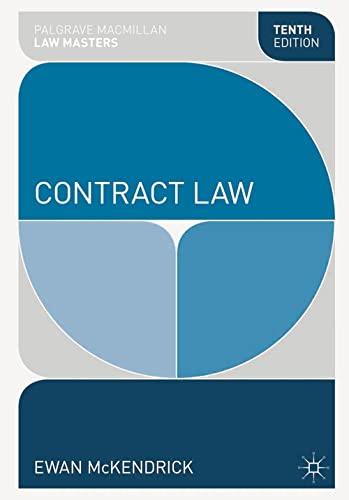Question
In a law school Federal Evidence final exam, what is generally the best chain of analysis in any question? An example could be: when adressing
In a law school Federal Evidence final exam, what is generally the best chain of analysis in any question?
An example could be: when adressing witness tesitmony (either expert or lay), address rule 701 first, then 401, then hearsay, then 403, and finally address the constitutional rights of the Defendant.
What order makes the most sense where the grader can happily follow along?
I know an answer to this question is highly subjective and it really depends on the specific facts, the professor, what was actually taught in class, how long we have to complete the test, ect.
I am asking for a general answer BUT
If the answeror has time and would like to apply this question to these broad hypos:
A hearsay issue where the Declarant is available.
A hearsay issue when there is confrontation clause issue.
An expert witness giving opinions.
An issue where a criminal defendant's habit of doing bad stuff is trying to be admitted.
Any direction is greatly appreciated.
Step by Step Solution
There are 3 Steps involved in it
Step: 1

Get Instant Access to Expert-Tailored Solutions
See step-by-step solutions with expert insights and AI powered tools for academic success
Step: 2

Step: 3

Ace Your Homework with AI
Get the answers you need in no time with our AI-driven, step-by-step assistance
Get Started


